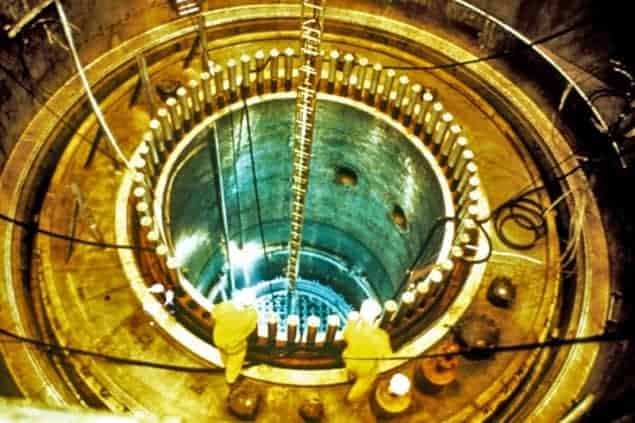
The American Physical Society (APS) is urging the US Nuclear Regulatory Commission (NRC) to change its licensing rules over fears that smaller, more efficient ways of enriching uranium will increase the risk of nuclear proliferation. The APS wants the NRC to force anyone applying for licences to submit a “proliferation review” as part of their submission. The NRC, which over the next few years is expected to be reviewing new licence applications for new nuclear technologies including the use of lasers to separate uranium isotopes, has given no immediate reaction. “It usually takes 30 days [to respond] once we receive a petition,” NRC spokesperson Ivonne Couret told Physics World.
The APS’s concern stems from a report – Technical Steps to Support Nuclear Arsenal Downsizing – that its Panel on Public Affairs issued in February. The group put particular emphasis on the separation of isotopes by laser excitation (SILEX) which, the petition states, “is both 75% smaller and substantially more energy efficient than centrifuge technology”. Few details exist on how SILEX works but it involves shining laser light on uranium hexafluoride (UF6) molecules, which then absorb the incoming photon, causing the UF6 molecules to separate to leave a uranium-235 nuclei.
“The study group found that some of the new technologies could represent proliferation game changers because they would lead to smaller, more efficient methods for production and use of nuclear materials that would be more difficult to detect,” the APS’s petition to the NRC states. Other organizations have also recognized the danger. Both the International Atomic Energy Authority and the US National Nuclear Security Agency have established programmes to spot new technologies, including laser enrichment, that have proliferation potential.
It is possible there have been advances that make it a significantly easier prospect for potential proliferators Richard Lester, a nuclear engineer at Massachusetts Institute of Technology
The fact that the SILEX process has only now come close to commercialization indicates that “it is not necessarily an easy technology for countries or sub-national groups to abuse,” says Richard Lester, a nuclear engineer at Massachusetts Institute of Technology, who supports the APS’s recommendation. Lester says he did his PhD on laser enrichment more than 30 years ago just when people were beginning to be concerned with the proliferation risks associated with laser technology. “It is possible there have been advances that make it a significantly easier prospect for potential proliferators so it is entirely appropriate that the NRC pay attention to proliferation possibilities,” he says
But it is not only SILEX that the APS is worried about. “The committee’s concern was not just to identify one technology,” says Francis Slakey, associate director of public affairs at the APS. “We did not identify particular technologies apart from lasers, but we looked at the technology trend: reactors out there will be smaller, more efficient, and more prone to proliferation.”
The APS calls for the NRC to require that licence applications for fuel cycle facilities contain a “proliferation review” that should include “sufficient technical information to permit an assessment of the risks that construction and operation of the proposed facility might pose.” If the NRC accepts the petition, it will probably call for public comments on the proposed new rule. The commission will then analyse the comments and forward the final rule for approval by the five NRC commissioners.



